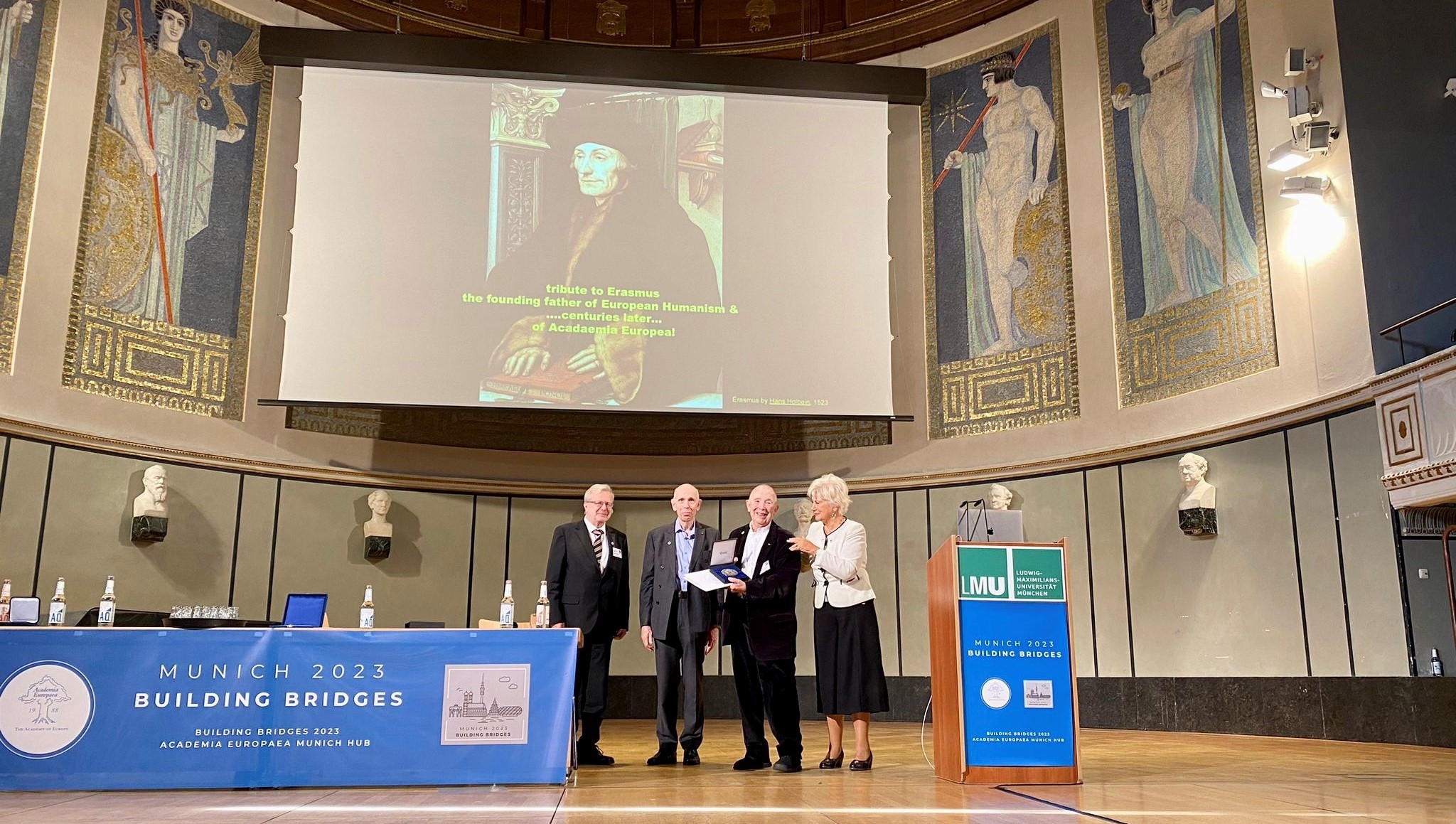Building Bridges 2023 Spotlight Series: an interview with Jean-Pierre Changeux#
Professor Jean Pierre Changeux MAE, recipient of Academia Europaea’s Erasmus medal, shares what the award means to him and discusses key aspects of his research.
About Jean-Pierre Changeux MAE#
Professor Jean-Pierre Changeux MAE is a leading figure in the fields of neuroscience and molecular biology, known for his ground-breaking contributions that span over five decades. His pioneering work includes dissecting the intricate nicotinic acetylcholine receptors, introducing the concept of allostery in membrane proteins, and proposing theories about brain development and cognition. Due to his pioneering and seminal activities, Changeux is one of the key founders of modern molecular pharmacology and neuroscience.
Beyond his scientific achievements, Professor Changeux has actively engaged in ethical discussions surrounding the impact of neuroscience on society. As a founding member of Academia Europaea, his contributions extend to shaping European scientific culture.
Professor Changeux received Academia Europaea’s Erasmus Medal and delivered the accompanying Academia Europaea – Heinz-Nixdorf Erasmus Lecture at AE’s Annual Conference, Building Bridges, in Munich on 10th October 2023. The laudation was given by Professor Ole Peterson MAE, Director of the Academia Europaea Cardiff Knowledge Hub.
Read the interview#
Congratulations on receiving the Academia Europaea Erasmus Medal! What does this award mean to you?
Receiving the Erasmus Medal recognises your contributions to the scientific community in Europe. As a founder member of AE, how do you see organisations like Academia Europaea promoting collaboration and knowledge sharing across Europe?
Can you tell us how your research in neuroscience and receptors might have practical benefits for everyday life or healthcare?
Another important issue for healthcare is drug discovery. In the course of my PhD studies with Jacques Monod
 , I found that drugs may act in a manner which differs from the classical competition with a biological ligand for a single rigid site. The proposal was that they may act on topographically distinct sites, establishing an indirect interaction named ‘allosteric’ with the biologically active. This led to the discovery (or reassignment) of many medicaments as ‘allosteric drugs’. More than 80 of them are currently in clinical use. The important advantage is that they exhibit little, if any, analogy with biological ligands and thus are expected to show less toxicity and secondary effects. They include, for instance, Ivacaftor (a drug recently designed against cystic fibrosis), carbamazepine, ivermectin, general anaesthetics, benzodiazepines, and even monoclonal antibodies against cancer.”
, I found that drugs may act in a manner which differs from the classical competition with a biological ligand for a single rigid site. The proposal was that they may act on topographically distinct sites, establishing an indirect interaction named ‘allosteric’ with the biologically active. This led to the discovery (or reassignment) of many medicaments as ‘allosteric drugs’. More than 80 of them are currently in clinical use. The important advantage is that they exhibit little, if any, analogy with biological ligands and thus are expected to show less toxicity and secondary effects. They include, for instance, Ivacaftor (a drug recently designed against cystic fibrosis), carbamazepine, ivermectin, general anaesthetics, benzodiazepines, and even monoclonal antibodies against cancer.”
Your research spans from molecules to brain functions. How do these different areas of research connect, and what have they taught us about brain development and cognition?
 sorting task.)
sorting task.)
Lastly, a most pressing question for us as humans is our evolutionary origins. Again, it is necessary to link the molecular evolution of the genome with that of the connective organisation of our ancestors’ brains. There’s still a lot to do!”
Apart from your research, you’ve discussed the ethics of neuroscience’s impact on society. How do you think ethics is changing as neuroscience advances, and what should scientists do to be part of these discussions?
About the Erasmus Medal#
The Erasmus Medal is awarded to a European scholar who has maintained, over a sustained period, the highest level of international scholarship. The medallist is invited to give the annual Erasmus Lecture during the opening session of the Annual Meeting of the Academia. The Medal and Lecture are currently sponsored by The Heinz-Nixdorf Foundation.
 .
.For further information please contact AECardiffHub@cardiff.ac.uk
 .
.


